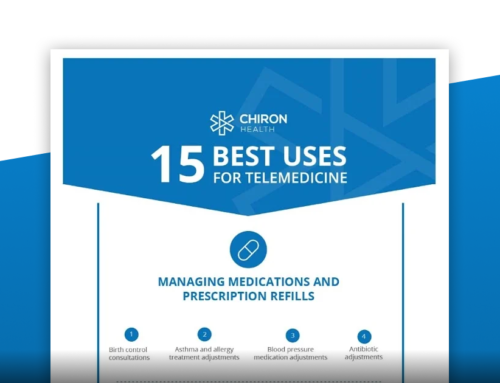Patient no-show rates are a chronic problem in physician practices, whether someone is a specialty-care provider or a primary care physician. Many practitioners aren’t even aware of their no-show rates nor the negative consequences they have on their practice.
The problem with high patient no-show rates
When patients miss appointments, that particular practice is negatively affected in a variety of ways. A few of the most common problems with high no-show rates are listed below.
- No-shows provide a financial problem for practices. They not only don’t earn money, they lose money on wasted resources
- Rescheduling no-shows and moving around existing appointments leads to wasted staff and practitioner time
- When patients no-show, the overall clinical work flow and efficiency of a practice decreases
- No-shows reduce patient engagement, thereby reducing the overall quality of care patients who no-show receive
- High no-show rates often lead to low patient retention rates
Most practice managers and practitioners understand the negative consequences of high no-show rates quite well. However, many have little to no insight into what causes these high no-show rates. Without understanding the cause of patient no-shows, it’s hard to fix the problem!
Why do patients no-show?
Let’s look at some of the main reasons patients fail to show up to appointments.
- Forgetfulness. We’ve all been there. We forget to write something on our calendar or get swamped with work and completely forget appointments. This is especially a problem with busy parents and professionals — they simply have too much else to remember.
- Inconvenience. Especially if a patient is in a hurry to see the doctor, he / she may select a time slot that is actually quite inconvenient for him / her. The likelihood that a patient misses an appointment is even greater if the time slot is at a highly inconvenient time to begin with.
- Accessibility. Depending on how convenient a practice is to access, patients may choose not to show up for an appointment because it’s simply a hassle getting there.
- Added hassle. Whether it involves hiring a sitter, using a lunch break, sitting in traffic or messing with parking, patients are deterred by the hassle of going to see the doctor.
- Time and money. Something that people seem to have less and less of these days is time and money. It’s often hard to justify spending money to sit and wait for an hour, only to speak with a healthcare provider for 10 minutes.
- They don’t feel connected to their care … or their doctor! Patients who feel more engaged with their healthcare and more connected to their healthcare provider are less likely to miss appointments. In short, established patients are less likely to miss appointments and often more engaged in their healthcare.
Each patient will have his / her own barriers to accessing care. The simplest way to understand the causes behind high no-show rates is to ask your patients. Have your front desk staff members at least attempt to collect this information from patients who frequently miss appointments.
How to reduce patient no-show rates
It’s not all bad news! Many studies have shown a variety of tactics that have been successful in reducing no-show rates. When reviewing the following no-show reduction methods, it’s important to remember why patients are no-showing in the first place. Not all methods will work for every practice, and some will work significantly better than others.
- Appointment reminders. Phone, email or text reminders are ideal for those forgetful patients. It’s always best to check in one week, two days and 24 hours before a patient’s appointment to remind them and confirm the time.
- Instate a financial incentive. Many practices request payment for follow-up appointments at the time the appointment is scheduled. Once a patient has paid for the appointment, they’re more incentivized to actually show up for the appointment.
- Create and enforce no-show and cancellation policy. Requiring patients to pay a cancellation or no-show fee within 24 hours of the appointment is a good way to deter no-shows, especially last-minute ones. Because many practices have a long wait list, getting cancellation notice 24 or more hours before the patients appointment allows enough time to fill the slot with another appointment.
- Keep contact information up-to-date. Double check when scheduling appointments that the contact information on record is up-to-date. It’s difficult to confirm an appointment if the contact information is incorrect!
- Work with your patients. Advise your front desk staff to be helpful when trying to find time slots that work for patients. Have them start by asking what day of the week works best and follow that up with time of day. The more convenient appointments are for patients, the less likely they are to miss them.
- Give them some added convenience. Offering telemedicine visits to patients who don’t require in-person exams is a fantastic way to completely eliminate the biggest barriers to care: inconvenience, time, hassle and accessibility. Patients are able to see their practitioner from their home or office without ever having to set foot in a car or crowded waiting room.
- Make your patients feel welcome. Small additions like having up-to-date magazines and televisions available, giving them estimated wait times and sending things like birthday cards and appointment reminders are great ways to make your patients feel more connected to your practice.
The bottom line
The single best way to reduce no-show rates is to help patients feel engaged in their healthcare and in your healthcare practice. Do what you can to minimize their barriers to care, help patients remember appointments and try your best to work around their schedules. In the end, patients who feel that their provider is an indispensable part of their healthcare will be the ones who show up — it’s up to practitioners to show them that!
For information on how you can begin offering telemedicine to your patients as early as today, speak with one of our Telemedicine consultants by scheduling a demo or calling us now at (970) 225-5050.






Leave A Comment